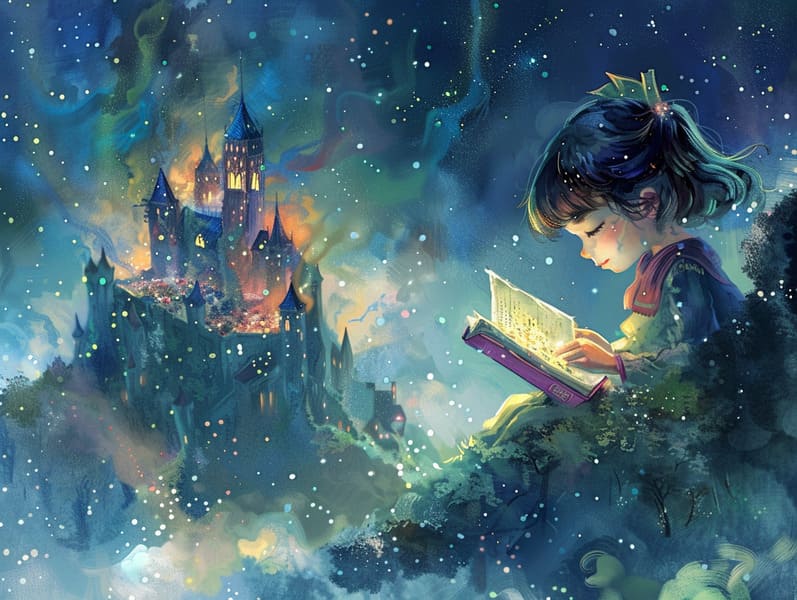
Old fairy tales have legendary status. These narratives have been transmitted from one generation to the next centuries before they were ever inscribed. They arose from a variety of societies, including Indigenous traditions. They were initially transmitted among elders, often carrying themes and messages related to the societal norms and beliefs of the time.
The Grimm brothers, Jacob and Wilhelm (the Grimm brothers), were among the first to gather and publish many of these beloved narratives. Their volume, "Grimm's Folk Tales," included tales like "The Story of Cinderella," "Little Brother and Little Sister," and "The True Story of Snow White," which have since become pillars in the world of famous fairy tales. Similarly, the Danish author's charming stories, such as "The Mermaid," and "The Ugly Duckling," have won hearts worldwide, ensuring their place in the pantheon of beloved fairy tales.
Though they are centuries old, classic fairy tales remain as relevant as ever, especially as bedtime stories for kids. These fantastical tales are now available in diverse formats, including colorful picture books, whimsical animations, and internet fairy tales.
Their lasting appeal can be linked to several charming aspects:
Important Morals: Timeless fairy tales often whisper important moral lessons. Narratives like "The Boy Who Cried Wolf" teach the benefit of integrity, while "The Tortoise and the Hare" emphasize the virtues of persistence and humbleness. These stories offer the young clear distinctions between correct and incorrect, molding their moral compass in a subtle yet lasting way.
Compassion and Knowledge: Traditional fairy tales frequently portray beings facing trials and tribulations, stimulating children to feel with their struggles and root for their triumphs. For instance, "Beauty and Her Beast" demonstrates the benefit of seeing inner beauty to appreciate the inner core of a character, strengthening sympathy and insight.
Cultural Knowledge: Many old fairy tales are deeply ingrained in the cultural contexts from which they sprang. Understanding these fairy tales can provide intriguing perspectives into different ways of life, building a sense of cultural appreciation and discernment.
Creativity and Fantasy: The mythical elements in ancient fairy tales—magical kingdoms—enhance children’s imaginative ideas. These tales move readers to fantasy realms, motivating imaginative dreams and a sense of amazement that endures a lifetime.
Old fairy tales are not only fantastical but also didactic. They function as fantastical tools in cultivating various thinking and feeling skills in young ones. When fairy tales are spoken out loud, they nurture language skills by introducing new linguistic elements and elaborate sentence structures. This practice also cultivates auditory perception and attention, as the young keep up with the story, keen to see what happens next.
Furthermore, reflecting on the themes and characters of fairy tales can strengthen logical thinking and thought processes. Little ones are taught to notice patterns, predict happenings, and know cause and effect. These deliberations also contribute to young ones say their thoughts and feelings, adding to their emotional intelligence.
In today’s technological era, the proliferation of internet fairy tales has made these tales more reachable than ever. Web platforms and web apps give extensive collections of old fairy tales that can be browsed or listened through anytime, anywhere. Fairy tales told out loud are particularly well-liked, sharing an delightful method for the young to be a part of these alluring stories. Spoken stories and read-to-me videos guide characters and settings to life, often complemented by magical melodies and songs that boost the story journey.
The unfading fascination of ancient fairy tales lies in their ability to shift to modern times while keeping their central values. Contemporary reinterpretations of these stories often spotlight more varied protagonists and modern settings, making them pertinent to today’s audience. However, the essential messages of gallantry, benevolence, and impartiality remain unchanged, continuing to touch kids of all ages.
Timeless fairy tales also offer a sense of reassurance and knownness. They impart a tidy narrative with a transparent beginning, middle, and end, often closing with the wrap-up of conflicts and the triumph of righteousness over wickedness. This consistency can be calming for young ones, extending a sense of security in an constantly changing world.
Traditional fairy tales continue to mesmerize and train new generations, maintaining their find it here majesty and value in modern society. As children's night stories, they present a perfect blend of enchantment and education, facilitating moral values, empathy, and creativity. The accessibility of free fairy tales online and the likability of fairy tales voiced promise that these old fairy tales remain attainable to new generations.
By sustaining and divulging these fairy tales, we continue to extol the rich tapestry of creativity and cultural heritage. Whether you are discovering a artistically illustrated book, discovering a virtual library, or listening on an spoken story, the radiance of bedtime fairy tales is always within reach. These fairy tales point out of the unfading spell of tales and its ability to hold us together across generations and cultures.
Be it you are reading a beautifully illustrated book, viewing a cyber collection, or listening via an read-aloud story, the allure of classic fairy tales is always within reach.
These stories convey of the undying spell of stories and its ability to gather us across epochs and places, weaving a spell that enchants and educates alike.